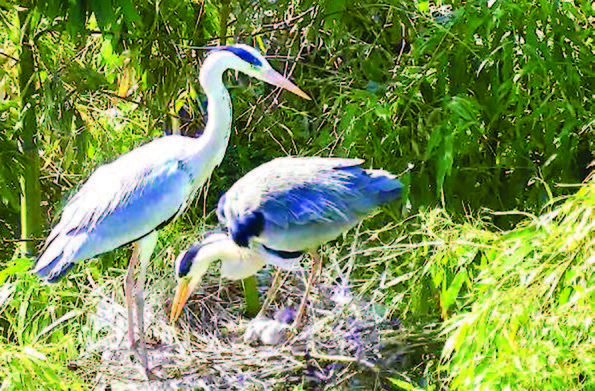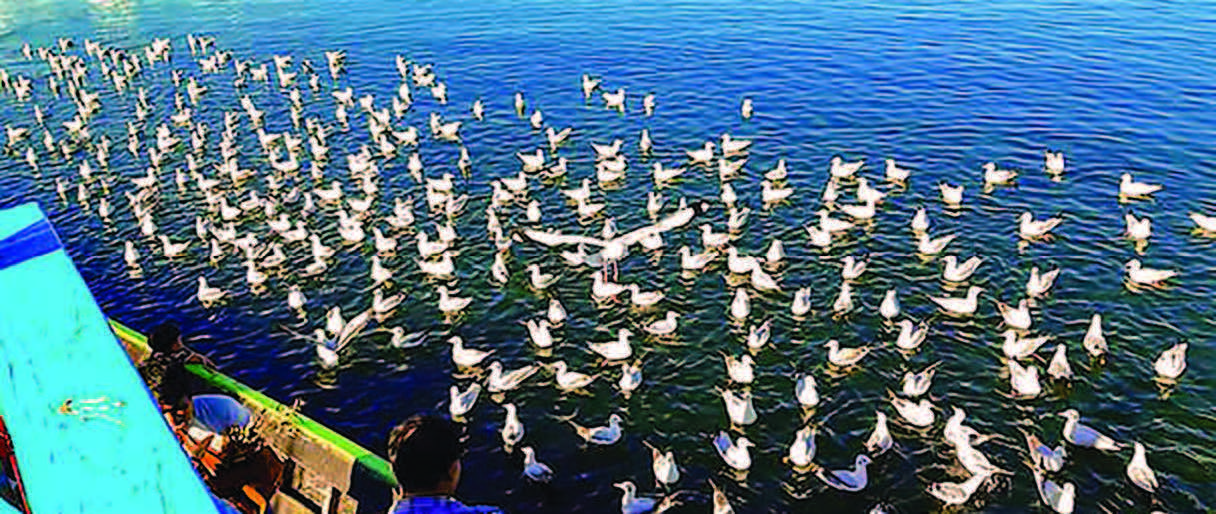21 Sep
By adapting the pandemic condition in 2020, Indawgi Lake Wildlife Sanctuary plans to promote a collaborative management with different stake holders for the journey of wintering birds, and also for the journey of Wetland community future generations.

I NDAWGYI lake from Myanmar, an ecologically significant area in Southeast Asia, involves as partnership site in (22) countries of East Asia-Australasian Flyway. Structure of landscape and variety of habitats including open lake, floating vegetation, seasonally flooded grasslands and surrounding paddy fields provide shelter and food for at least about 20,000 migratory birds annually. From birds survey conducted between 2000 and 2017, a total of (276) birds species were recorded including (17) globally threatened species such as Falcated duck, Baer’s Pochard, Black-necked Stork, Oriental Darter and Sarus Crane.
With the vision of CEPA strategy plan, Indawgyi Lake Wildlife Sanctuary has been conducting conservation activities in collaboration with different stakeholders including Forest Department, Fauna & Flora International (FFI), Inn Chit Thu (Community Organization), Community Forestry and local CSOs. Environmental friendly rice and Ecotourism projects were initiated at the region with supporting Donors including Darwin Initiative, Michael Succow Foundation, and Helmsley Charitable Trust. Asean Centre for Biodiversity (ACB) is providing financial support in various sectors of Wetland conservation activities including Community outreach conservation awareness, Waste Manage ment and Sanitation, Organic farming and Community Forestry, Fish resource management and Ecotourism projects. Community surrounding the lake includes Shan and Kachin ethnics in a total of (36) villages and Wetland Education Center has been a main learning center for community. In 2020, the Center had to be closed due to Pandemic occurrence and alternative conservation approaches were developed among the stakeholders.
Indawgyi Wetland youths Capacity building
During the period, regular work activity of Conservation Partners were effected including visitors’ arrival to Indawgyi, pause of eco-tourism activities and regulations of the Eduction Center. However, on the other hand, there became more opportunities for local youths at the region to build capacity, spend time effectively at Covid period and learn for new skills they are interested to enhance. Between July and August, local youth trainings were offered from Indawgyi Lake Wildlife Sanctuary with technical support from FFI including the topics; PES, Social surveys, Camera trapping, GPS use and GIS.
Visibility and Wetland IEC development
Due to the cancellation of public awareness talks, IEC development became one of the strategies in awareness raising by distributing IEC for target community and locations around the lake. Educational materials including Indawgyi Bio sphere booklets, IEC note books, Wetland related Vinyl, Bio diversities flash cards and stickers were developed for promoting awareness and communication purposes.
Home based awareness meetings
Based on National guidelines of meetings rules, most of the activities are adjusted as small group size meetings or individual household meetings instead of public gatherings. In the region, Indawgyi Wetland Education Center locates at Western region of the lake. Due to the road conditions, transportation barriers in past years and far distance, community from Northern and North-West did not have much opportunities to visit to the Center. Grasslands being located at Northern Indawgyi, it was discussed among stake holders to prioritize the region in community outreach awareness plan. Between June and August, individual household meetings were initiated with the Northern community including village representatives, religious leaders, farmers and fishermen. In July, awareness meetings related to Wetland Wise Use were conducted in (4) villages of Eastern and Western.
Wetland guardians-Indawgyi Wetland network
In Indawgyi, types of threats for Wetland birds include loss of nesting sites due to agricultural expansion, hunting with handmade gun, use of food poison for birds at winter period and being killed by abandoned ghost nets. From communication and awareness activities, community from diverse regions; especially those whose livelihoods depend on Wetland, started to involve as a small network informing about the threats of Wetlands birds, locations of Wildlife breeding site and sharing of their experience with surrounding nature. Around Northern grassland and surrounding forests, habitat of bio diversities including hog deer, turtles, peacocks and porcupines were assessed and identified through local community support. In August, Indawgyi Lake Wildlife Sanctuary has initiated camera trapping activity in collaboration with FFI and local community.
Creating knowledge centers: “Little exhibitions of the lake”
During the period, governmental schools have been closed due to the Virus outbreak. Informal schooling system such as monastery schools, private free tuitions and operating village libraries locations were assessed to create small libraries or support in existing libraries for community. In September, panels displayed at Indawgyi Wetland Education Center are to be reproduced as Vinyl for creating a small exhibition at different region of the lake including village library, monastery school or public meeting area.
Identification of nesting sites (Surveys and assessments)
Between September and December, it is planned to continue household surveys, assessments and community outreach awareness activities. For the winter period of 2020, it also plans to observe main nesting site locations through assessments for migratory birds habitats protection.
It can be stated that sudden emergent of global pandemic in 2020 prevented most of day to day activities and cancelled planned activities of the year. However, it also creates new opportunities to Flyway Partners of the network from developing new pathways of conservation strategies. By adapting the pandemic condition in 2020, Indawgi Lake Wildlife Sanctuary plans to promote a collaborative management with different stake holders for the journey of wintering birds, and also for the journey of Wetland community future generations.
References
Indawgyi Wildlife Sanctuary monthly bird survey reports between 2005 to 2017 Aung et all (2012), Waterbird Census in Indawgyi report, Feb 2012 Lwin et all (2013), Waterbird census in Indawgyi report, Dec 2013 Christoph (2015), Waterbird survey in Indawgyi report, Dec 2014 Christoph (2016), Waterbird survey in Indawgyi report, Feb 2016 Ngwe Lwin (2017), Mid-winter count in Indawgyi report, January 2017
ABOUT THE AUTHORS U Maung Win, Park Warden from Indawgyi Lake Wildlife Sanctuary and Su San Win Pe, Project Manager – “Community Outreach Conservation Awareness”, Indawgyi Program from Fauna & Flora International (Myanmar Programme).
By U Maung Win and Su San Win Pe



